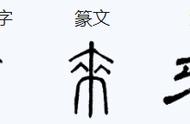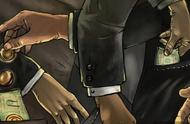《周处》清河曰:“古人贵朝闻夕死,况君前途尚可。且人患志之不立,何忧令名不彰邪?”处遂改励,终为忠臣。讲的就是为祸乡里的三害:人中周处、水中蛟龙、山中白虎!且周处为三害之首,百姓深恶痛绝。后来周处想改过自新,但岁月已经荒废,当时的圣贤陆云就告诉他说:即使是早上明白,晚上就逝去也不晚。最后周处及时改正,最终成为一名忠臣!

这个周处的故事最妙的地方就在一个“遂”字,及时行动,马上开始!典型的及时行动的故事还有我们众所周知的“负荆请罪”,讲的是大将军廉颇得知名相蔺相如是以国家安危为重才处处避让,故及时放下身段,主动上门请罪,成为一代佳话。

上面讲了国内千古传诵的及时故事,下面就说几个国外的准时故事。德国哲学家康德可以说是准时的典范,不光是为了准时而尽一切努力,而且做了还不让人知道。这是什么故事呢?话说有一次康德要去拜访一个朋友,约好了时间。他为了不迟到还提前很长时间出发了,但是不幸路上遇到洪水,河上的桥被冲垮了。马车不能过河,于是他四处找船。但是找了很长时间都没有找到,眼看约会时间就要到了,他就给了附近一个农民很多钱,把他的房子拆了做一条船渡河。这样他没有迟到,准时赴约!

因为不准时付出代价的故事也讲一个,说的是法国拿破仑,一次宴请部下几位将军,并在饭后议事。那几位将军迟到了。他便一个人先吃起来,等他们到后,他已经吃完了。他对他们说:“诸位,聚餐的时间过了,现在咱们开始研究事情吧。”他丝毫不理会那些不遵守时间的将军们的饥饿和窘境。

这些就是“及时”与“准时”这两兄弟在中外典故中的身影,英文就是“in time”和“on time”。“及时”就是适时、逢时、要把握时机、抓紧时间。“准时”就是守时、如期、按时、按期。了解这两兄弟的概念差异,再回头想想为什么这些中外故事能够长久为人们所记住?不外乎对我们有警示和教育的意义,都是有时效性品质的故事!
那么,如何才能让我们自己的故事高品质呢?今天,我们就要和大家掰一掰做事的时效性品质!如果目标是“约定好时间要去做某事”,那么时效性品质的“首要准则”就是要“准时”。如果是事情发生了,不管是在不在预期中的,为了把事情朝目标方向引导,我们就要采取一定的行动和措施,这个时候时效性品质准则就是“及时”。
质量就在我们身边,“及时”与“准时”这两兄弟到底谁说了算,关键还看我们做事的目标。围绕目标行动,该“准时”就尽一切努力去达成,该“及时”就不要犹犹豫豫、踌躇不前,这样做事我们的故事才会有高时效性品质!
********************************
我们的宗旨:传播质量思想,促进质量提升。每天投资10分钟,与您一起缔造高品质的生活!

It is said that in ancient times there were three evils: Zhou Chu in people, dragon in water, mountain white tiger, and Zhou chu was the first of the three evils, which the people hated most. Later, Zhou Chu wanted to turn over a new leaf, but the years were already deserted. The sage Lu Yun told him that even if he knew the truth in the morning, and die in the evening,it would not be late. So Zhou chu corrected in time and eventually became a loyal minister!
The best thing about this Zhou Chu 's story is that it's timely action and start right away! "To Offer a Humble Apology" is also a typical story of timely action. General Lian Po learned that Lin Xiangru only avoided him because he was concerned about the safety of the country. So Lian Po took the initiative to carry thorns, and go to Lin Xiangru' s home to apologize. The story was later praised by many people.
Above I tell the classic domestic stories about 'in time', the following I want to bring a few foreign stories about on time. The German philosopher Kant was a model of punctuality. Not only did he do everything he could to be on time, but he did it in secret. Once Kant was going to visit a friend and made an appointment. In order not to be late, he started ahead of time early, but unfortunately the road was flooded and the bridge over the river was washed away. His carriage could not cross the river, so he looked for a boat. But he couldn't find it for a long time. When the time came for the date, he gave a nearby farmer a lot of money to break down his house and build a boat to cross the river. In this way, he wasn't late and kept his appointment on time!
Here's the story of paying the cost of their unpunctuality. French Napoleon once invited several of his generals to a dinner and discussed the matter after the meal. The generals were late, so he ate alone first. By the time they arrived, he had finished eating. He said to them, "Folks, dinner time has past. Now let's get down to business." He just paid no attention to the hunger and embarrassment of the generals who did not keep time.These are the stories of the two brothers "in time" and "on time" in Chinese and foreign allusions. "In time" means to seize the moment and take action immediately. "On time" means on schedule and keep your appointment. After understanding the differences in their concepts, we can think about why these Chinese and foreign stories can be remembered for a long time. Because these stories have warning and educational significance for us, and they are quality stories about timeliness!
So how can we make our own stories have high quality? Today, let's talk about the quality of timeliness when practicing! If the goal is "set a time to do something," then the "first rule" of timeliness quality is to be "on time.". If something happens, whether it is expected or not, we need to take certain actions and measures in order to guide things toward the goal, at which time, quality criterion of timeliness is "in time".
Quality is all around us. The key to distinguishing "in time" from "on time" lies in our goals. We should act around goals. When we are supposed to be "on time", we should make every effort to achieve; When we should be "in time", we should not hesitate, so that our story will have a high timeliness quality!
********************************
Our mission, to disseminate quality ideas and promote quality improvement. Invest 10 minutes every day, and we strive to build high quality life with you.
















